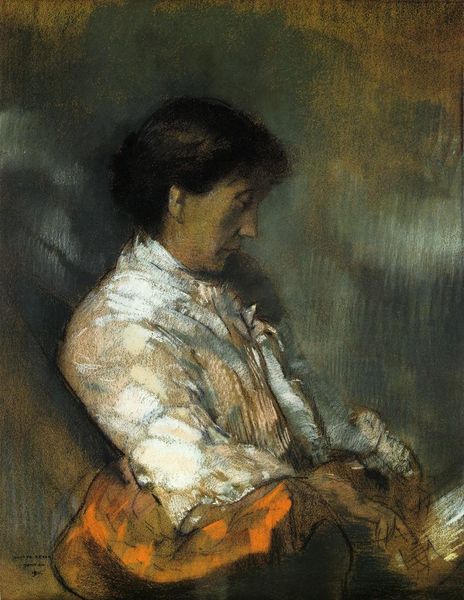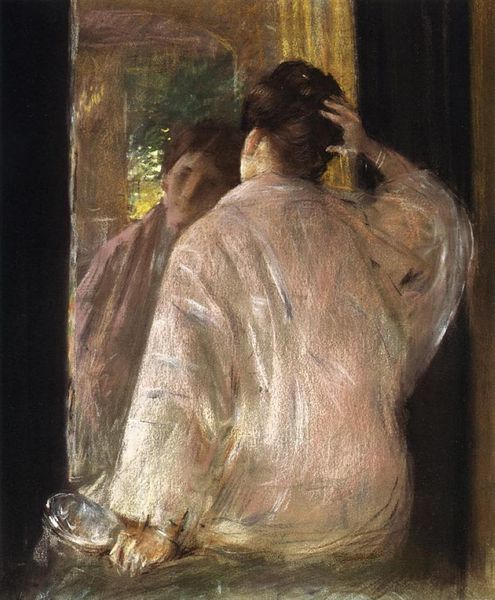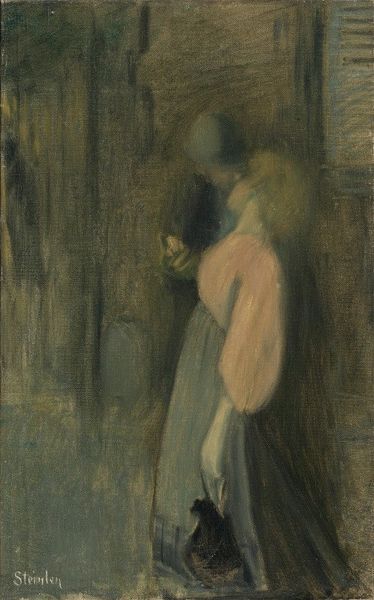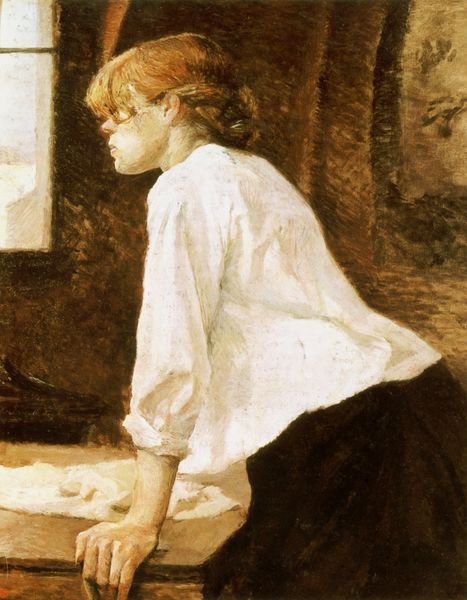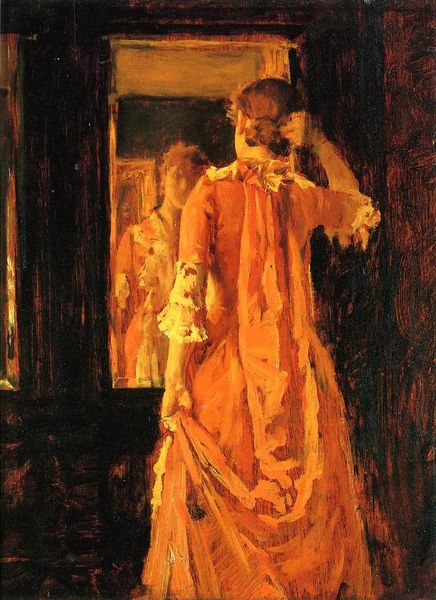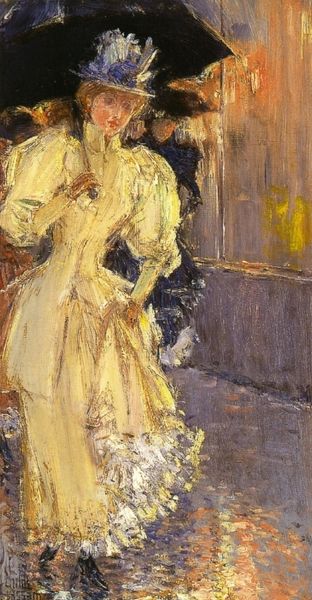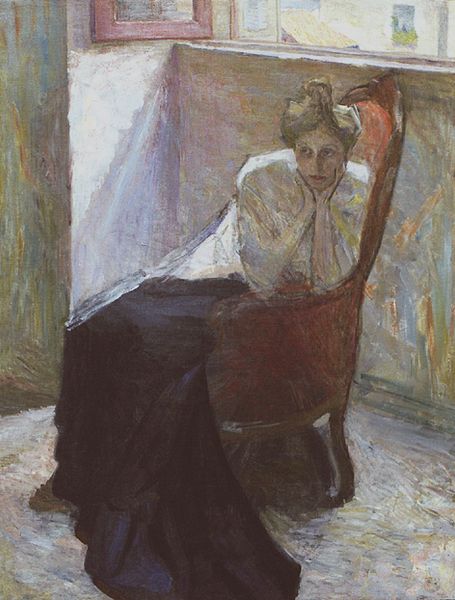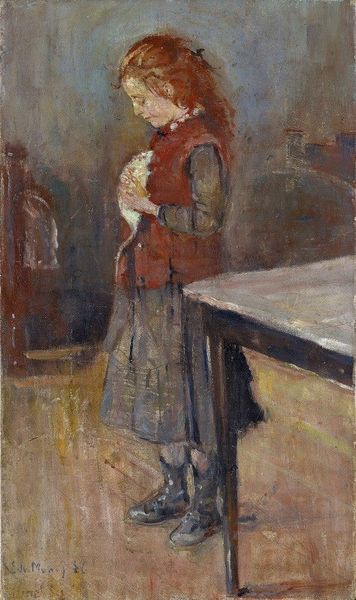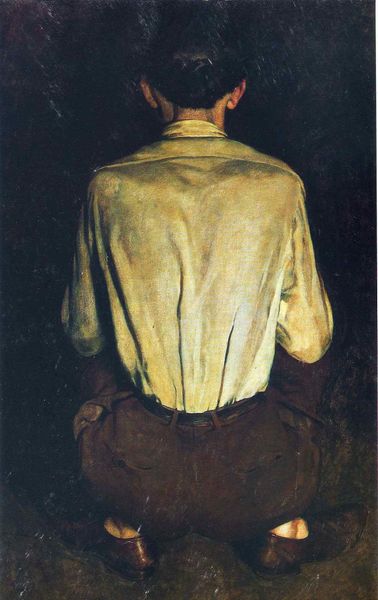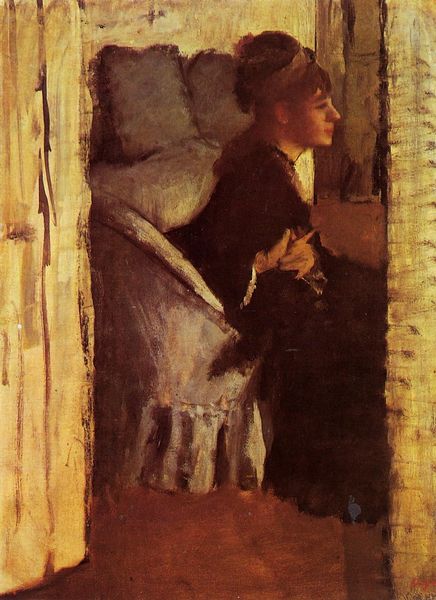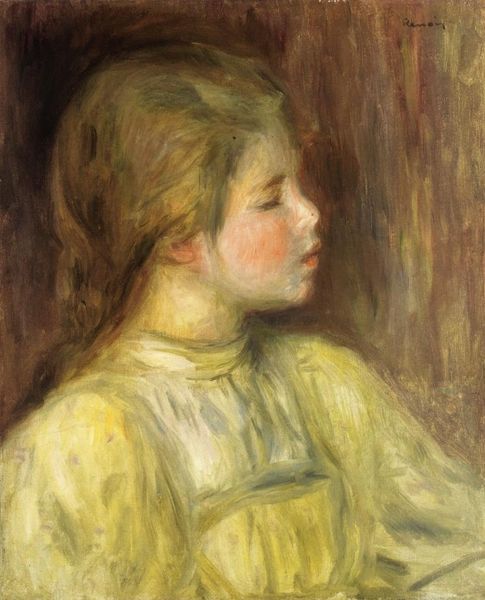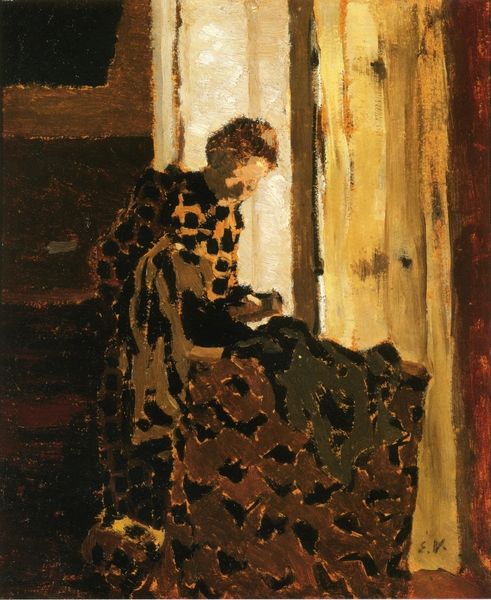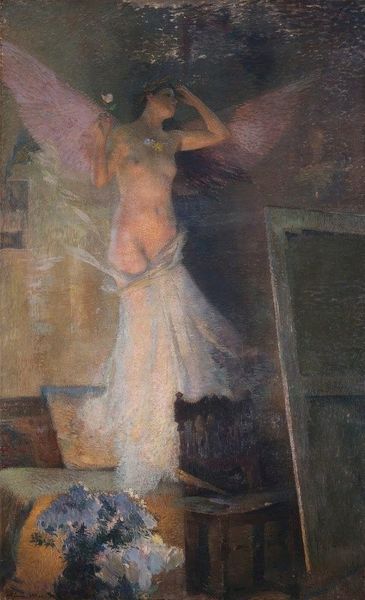
At Montrouge ( Rosa la Rouge) 1887
0:00
0:00
henridetoulouselautrec
Barnes Foundation, Philadelphia, PA, US
painting, oil-paint
#
portrait
#
painting
#
impressionism
#
oil-paint
#
oil painting
#
genre-painting
#
post-impressionism
Dimensions: 72.3 x 49 cm
Copyright: Public domain
Curator: The emotional tenor here is quite heavy; it feels shadowed with the quiet struggles of its sitter. Editor: That’s right; let's consider this oil on canvas. Painted by Henri de Toulouse-Lautrec in 1887, it's titled "At Montrouge ( Rosa la Rouge)" and resides at the Barnes Foundation. It’s quite characteristic of Lautrec's genre painting. The brushstrokes, although clearly impressionistic, convey so much. Curator: It’s this balance between objective representation and emotional depth that resonates with the viewer. Rosa’s face is partially obscured by her hair, immediately setting a tone of concealment, or introspection, suggesting a story beneath the surface. Editor: Consider how that obscured face interacts with the light itself. The impasto creates a tangible texture; those light-filled impasto brushstrokes build both luminosity and psychological depth, wouldn’t you agree? See how the composition places her within an interior frame—a room that’s part prison, part sanctuary, perhaps. Curator: Precisely, her red hair provides such striking symbolism—an open defiance. The 'rouge' of her nickname hints to her independent spirit. The tension created between the vulnerability displayed, and this defiant flash creates complexity within the portrayal. Is she captive or liberated? The artist presents this internal battle well. Editor: Notice how the tonal range—primarily earth tones—works deliberately to amplify that. A formal language describing more than what’s merely seen: social alienation, interiority, or both. There's this sense of a world closing in, all painted with the lightness associated with Impressionism. Fascinating dichotomy, isn't it? Curator: Yes, a somber mood indeed—yet powerfully evocative of a spirit we know persists even in shadow. Editor: Absolutely; it provides much to ponder about artistic language and human spirit, indeed.
Comments
No comments
Be the first to comment and join the conversation on the ultimate creative platform.
